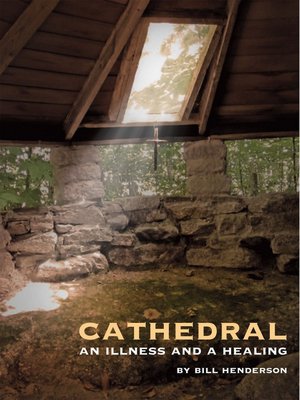
Henry David Thoreau built a cabin in the woods. Bill Henderson did him one better—he built a cathedral. And that was after having already built a tower.The tale of the building of the tower was told in his circa-2000 book “Tower: Faith, Vertigo, and Amateur Construction.” Almost 15 years later, the building of the cathedral is described in his new book, “Cathedral: An Illness and a Healing.”
“This is a story about an aging man who attempts to build a holy place in his backyard. It involves bugs, lousy weather, cancer and spiritual waverings,” reads the introduction. “My inspirations were Chartres Cathedral, St. Francis of Assisi, and the faith of family and neighbors.”
Mr. Henderson, an award-winning author who divides his time between Springs and Sedgwick, Maine, is the founder of Pushcart Press—which published his most recent novel in October—and editor of the Pushcart Prize series. He also founded The Lead Pencil Club, a loose aggregate of writers and curmudgeons who cast a cold eye on the inroads of computers and digitization.
He is a man with a lively and quirky religious sensibility. Faith and doubt exist with a tension, one pulling against the other. Though he is an elder in the Springs Presbyterian Church, he has little use for organized religion. He has chronicled his spiritual journey in a number of books, most notably “Tower” and “Simple Gifts: One Man’s Search for Grace,” about the pleasure of singing hymns. “Cathedral” is the latest installment in this narrative.
It began many years ago, when he bought a 3½-acre property on a hill in coastal Maine. From one side he could see the ocean. On the opposite side was a large expanse of blueberry fields.
Over the course of time, he built a cottage, and his tower. Then he set out to build a cathedral on his property. Don’t expect rhyme or reason. He just wanted a “holy place” in his backyard. It was a place where, he wrote, “we would study from no single book, no offering would be taken, many hymns would be sung, many prayers uttered (unscripted preferably) but the presiding doctrine would be silence.
“This would be a cathedral of shut your mouth and listen.”
He took its organizing visual metaphor not from heaven, as did Chartres Cathedral in France, but from the earth. Pictures show it to be somewhat squat, much like a low, round Navajo kiva.
Mr. Henderson built it with stones from a local quarry. Though mortar was used, it was the weight of gravity that kept it from crumbling to the earth. Chartres has stained glass windows that commemorate a saint, or tell a biblical story. Mr. Henderson’s cathedral had stones honoring his friends and his family. “St. Stones,” he calls them. One large boulder, central to the structure, had split wide apart millennia ago. The two halves became the altar and the pew.
It was a heroic and quixotic venture, but it almost came undone when the writer was diagnosed with breast cancer—and it returned twice more. Surgery, radiation and chemotherapy left him too weak to continue, or even to care.
Then, his beloved dog Lulu was diagnosed with terminal cancer at the same time. It was a double blow. His cathedral, in his eyes, became “[a] meaningless discard of rocks. To what purpose? Not even a curiosity.”
Mr. Henderson closes the book with entries from a journal covering the next two years. The entries are telegraphic and immediate, often painful to read. “A flowing prose,” he wrote, “would only create a gloss on the deep down horror.”
But he rallied. Slowly and painfully, he began again. His daughter found him another dog, which they named St. Francis of Assisi. Of course, other than Jesus Christ himself, Francis and his simplicity is one of the presiding spirits over the cathedral, as is St. Augustine—“my brother from 1,600 years ago,” Mr. Henderson wrote.
Mr. Henderson’s theology is often “catch-as-catch-can.” Even the Dalai Lama (“my kind of god,” he wrote), who “says that he didn’t need any kind of theology beyond kindness,” makes an appearance in the book.
This is quite simply a wonderful book. Mr. Henderson has a Thoreauvian crankiness that is a tonic for our connected age. “Cathedral” reveals a man with a profound moral sense, a touching vulnerability, and—though he would probably laugh at this—an innocence of spirit.
“Joy and wonder,” is his mantra. “Cathedral” is a book to read and reread.